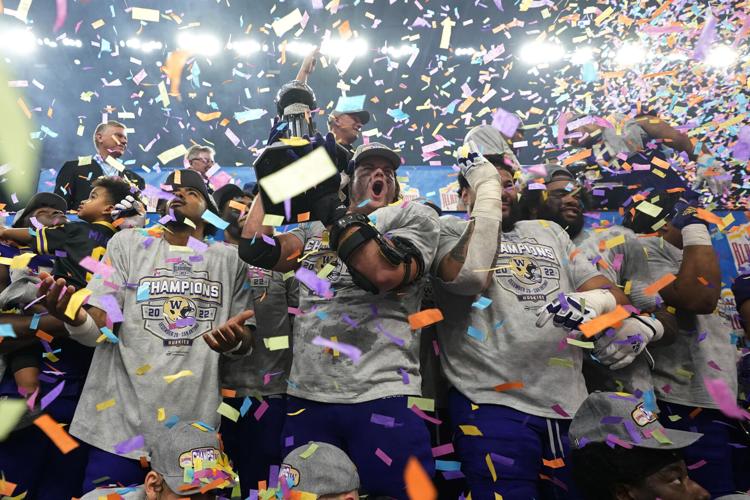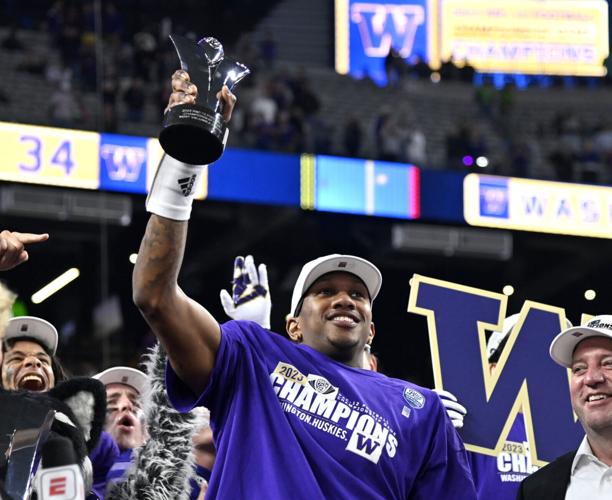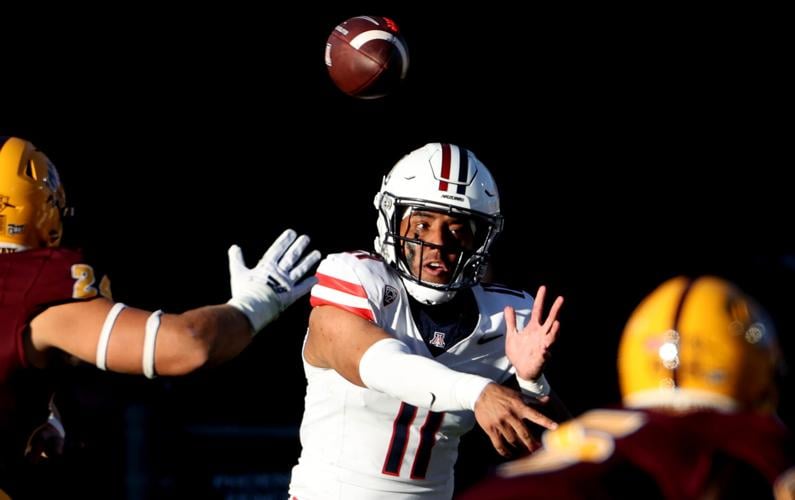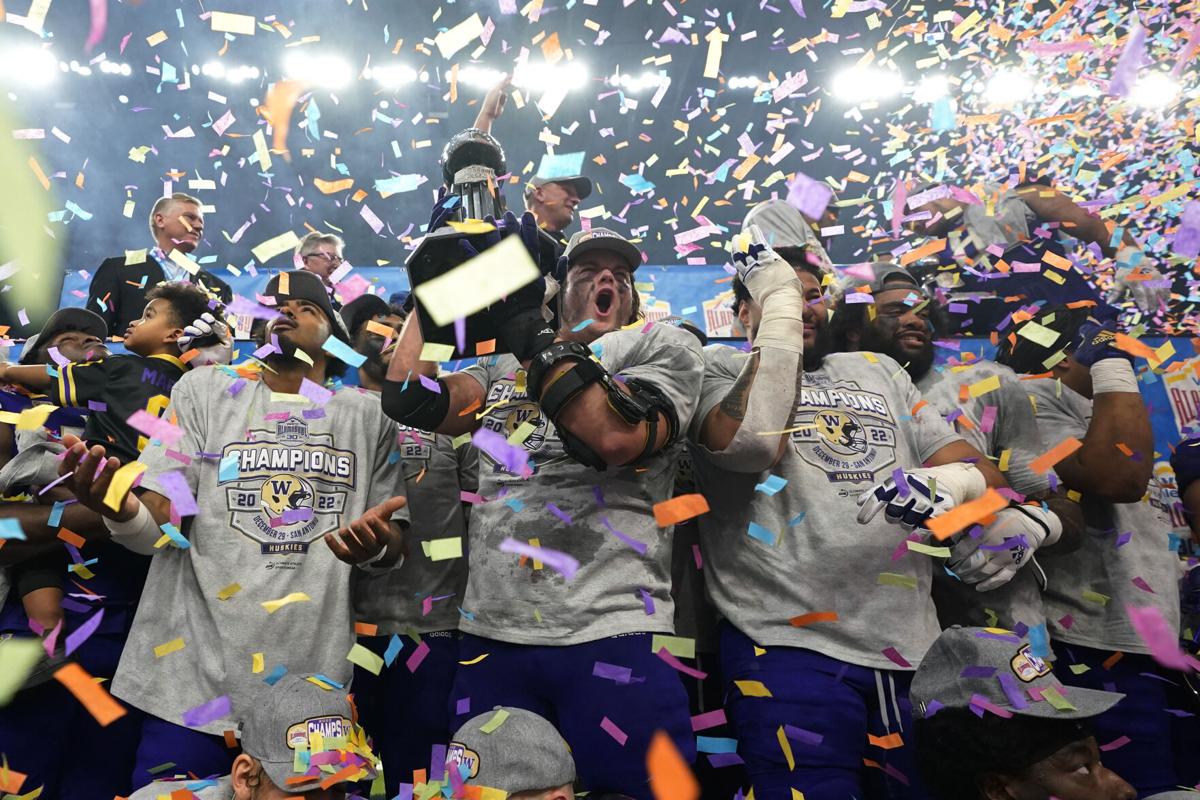Washington’s inclusion in the College Football Playoff was controversy-free. UW earned its way in by posting a perfect record in the Pac-12, which proved to be the toughest league in the land in its final iteration.
As the conference is disbanding, there will be no successor to the crown in 2024. That doesn’t mean someone can’t follow in the Huskies’ paw prints.

Michael Lev is a senior writer/columnist for the Arizona Daily Star, Tucson.com and The Wildcaster.
As of today, Arizona is ideally positioned to pursue that path. The parallels between the programs are plentiful.
Washington finished the 2022 season with a 10-2 overall record, 7-2 in Pac-12 play. The Huskies landed in third place, ended the regular season with a six-game winning streak and played in the Valero Alamo Bowl.
Arizona finished the 2023 season with a 9-3 overall record, 7-2 in Pac-12 play. The Wildcats landed in third place, ended the regular season with a six-game winning streak and will play in this year’s Alamo Bowl.
“The Alamo Bowl is a great spot,” UA coach Jedd Fisch said Monday. “Texas played Washington last year in it. And now Texas plays Washington in the CFP. So wouldn’t that be cool if that was a precursor — you go to the Alamo bowl, and then the next year you go to the CFP.”
With the CFP expanding to 12 teams next year, it isn’t some farfetched notion — it’s a realistic possibility.
The shift to Washington as a role model might feel like bandwagon-jumping. I previously placed Utah, which won the Pac-12 in 2021 and ’22, in that position. That idea wasn’t well received by some UA fans, who see the Utes as equals at most. But the person who matters most — Fisch — shares my view.
Fisch has had a front-row seat to what makes Utah, well, Utah. The Utes are a tough, physical team in the trenches. They have one of the best home-field advantages west of Texas. And they’ve achieved coaching-staff continuity that’s rare in modern college sports.
Washington has two of those three; it’s too early in Kalen DeBoer’s tenure to assess his ability to retain staff. The Huskies surpassed the Utes’ achievements — not only winning the Pac-12 but making the Playoff — because they had an elite quarterback, put excellent weapons around him, kept their nucleus and had good enough injury luck to survive the season unscathed.
As of today, Arizona has three of those four; the injury part is up to the football gods. They did not smile on the 2023 Utes, who didn’t have the services of Cam Rising and Brant Kuithe, among others.
The biggest challenge for Arizona lies in keeping the team together. It’s harder than it’s ever been.
The NCAA transfer portal officially opened for business Monday. As expected, chaos ensued.
Hundreds of players entered, including many top-shelf quarterbacks. It’s beyond free agency; it’s a free-for-all.
As of this writing, only a handful of players had announced their departures from Arizona. None were starters this season. But that could change any second.
The initial portal window is open for 30 days. NIL deals aren’t just a rumor. Like it or not, they’re a reality.
Fisch has created a strong culture here. Kids want to play for him and be part of what he’s building.
But when donor-backed NIL collectives make offers you can’t refuse, how do you refuse? Who among us can definitively say we’d turn down six- or seven-figure promises?
As of this writing, there is no indication that any of Arizona’s premier players are headed elsewhere. But no one saw Dorian Singer leaving last year. He and two other starters, Kyon Barrs and Christian Roland-Wallace, transferred to USC.
“I would say that the last group was very different than this group,” Fisch said. “I don’t envision that with the team that we have.”
The key to Washington’s success this year is what happened a year ago. Quarterback Michael Penix Jr., who could have entered the NFL Draft, elected to return.

Quarterback Michael Penix Jr. celebrates with his MVP trophy after Washington defeated Oregon in the Pac-12 Championship last week.
“I’m working on everybody,” he said at the time. “I’m trying to keep this thing intact, man. Special group.”
Almost everybody who mattered came back. Star receiver Rome Odunze came back. Defensive linemen Bralen Trice, Zion Tupuola-Fetui and Tuli Letuligasenoa came back.
All of them could have gone pro. None of them did.
“I think the common theme has been a lot of, they don’t want to miss out on what’s ahead here in this program,” DeBoer said ahead of last year’s Alamo Bowl. “They’re excited about what they’ve built and what the opportunity is, not just in this game but next season. And so when you have those relationships amongst your team, they don’t want to miss out, and they know how important each of them are to the success of the others.”
Doesn’t that sound like something Fisch might say?

Arizona quarterback Noah Fifita threads the seam on a third-quarter throw in the Wildcats’ throttling of rival Arizona State in the 97th Territorial Cup on Nov. 25, 2023, in Tempe. Fifita threw for a program-record 527 yards.
In terms of the portal, Washington lost 11 players who committed to or transferred to other schools, according to the 247Sports database. Only two of them, receiver Taj Davis and defensive end Sav’ell Smalls, played more than 60 snaps in 2022. The Huskies added 10 players through the portal, including key contributors Dillon Johnson, Germie Bernard and Jabbar Muhammad.
“They got everybody to come back. That’s what happened,” Fisch said. “So assuming everybody comes back, then I would think that we too will have a great opportunity.”
As of today, Arizona is slated to return its leading passer (Noah Fifita), rusher (Jonah Coleman), receiver (Tetairoa McMillan) and tackler (Jacob Manu); four-fifths of its offensive line; and its entire secondary.
The Wildcats also are moving to a conference, the Big 12, that’s losing its heavyweight programs, Texas and Oklahoma. Only two teams that are currently in the Big 12 and returning next year, Oklahoma State and Kansas State, made the final CFP Rankings, at 20 and 25, respectively. Arizona is No. 14.
Rosters are being shuffled as we speak, and we won’t know what they truly look like until after the second portal window in spring. But as of today — a phrase that’s been used four times in this column, for those scoring at home — I like Arizona’s chances.
Can the UA go undefeated next year, as UW did this year? Probably not.
Can the ’24 Cats follow the ’23 Dawgs into an expanded CFP? Without a doubt.
Arizona head coach Jedd Fisch held a news conference this week and discussed the Wildcats ending the regular season 9-3, bowl game prep, coaching contracts and increasing the salary pool, transfer portal and potential bowl opt-outs, among other topics. Video by Justin Spears / Arizona Daily Star








